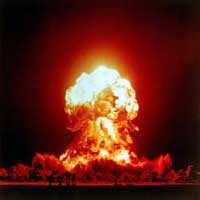Support Equals Resistance Another principle
Post# of 25567

Support Equals Resistance
Another principle of technical analysis stipulates that support can turn into resistance and vice versa. Once the price breaks below a support level, the broken support level can turn into resistance. The break of support signals that the forces of supply have overcome the forces of demand. Therefore, if the price returns to this level, there is likely to be an increase in supply, and hence resistance.
The other turn of the coin is resistance turning into support. As the price advances above resistance, it signals changes in supply and demand. The breakout above resistance proves that the forces of demand have overwhelmed the forces of supply. If the price returns to this level, there is likely to be an increase in demand and support will be found.
In this example of the NASDAQ 100 Index $NDX), the stock broke resistance at 935 in May-97 and traded just above this resistance level for over a month. The ability to remain above resistance established 935 as a new support level. The stock subsequently rose to 1150, but then fell back to test support at 935. After the second test of support at 935, this level is well established.
From the PeopleSoft (PSFT) example, we can see that support can turn into resistance and then back into support. PeopleSoft found support at 18 from Oct-98 to Jan-99 (green oval), but broke below support in Mar-99 as the bears overpowered the bulls. When the stock rebounded (red oval), there was still overhead supply at 18 and resistance was met from Jun-99 to Oct-99.
Where does this overhead supply come from? Demand was obviously increasing around 18 from Oct-98 to Mar-99 (green oval). Therefore, there were a lot of bullish buyers of the stock around 18. When the price declined below 18 and fell to around 14, many of these (now unhappy) bulls were probably still holding the stock. This left a supply overhang (commonly known as resistance) around 18. When the stock rebounded to 18, many of the green-oval-bulls probably took the opportunity to sell and "escape" with little to no loss. When this supply was exhausted, the demand was able to overpower supply and advance above resistance at 18.
 (0)
(0) (0)
(0)